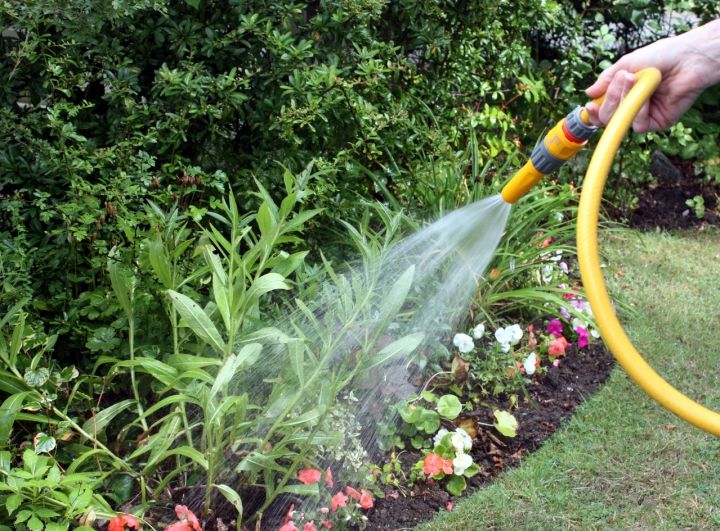Save Water & Money with Drip Irrigation
May 17, 2016 | By webadmin
We are always looking for ways to save water (and money) in the landscape. Planting waterwise plants, adding smart controllers and keeping your current irrigation system in working order will all help to reduce water needed in the landscape. Over the past few summers, if you noticed plants struggling, or lost plants, then it could be time to rethink your irrigation system. Renovating your existing system with drip could greatly improve the health of your plants in your landscape.

Supplementing with hand watering in areas of your garden too often? Drip irrigation is a better way to keep your plants healthy.
Reasons we love drip irrigation:
First, what exactly is drip irrigation? Instead of tall spray heads that can spray more water into the air, then directly to your plants, drip heads release a slow and steady drip stream of water directly to the root zone of the plant at the soil level. With drip irrigation plants will get a slow, deep watering. No water is wasted by spraying into the air and rarely is there water runoff.
You’ll Save More Water
Using traditional spray head irrigation systems can cause a lot of water waste. In fact, studies have shown that 50%-70% of water from traditional sprinkler heads is wasted to evaporation, water blowing away in the wind and water runoff when the soil can’t absorb the water quickly enough. Because drip irrigation delivers water right to the root zone in a controlled manner, water goes only where it’s needed...to your plant’s roots.
Reduce Plant Diseases
Depending on what plants you have in your landscape, drip irrigation just might be the key to reducing persistent fungal diseases. For example, spray irrigation that wets the leaves of plants such as roses is a big cause of black spot and powdery mildew. It can also spread other leaf spot diseases on plants like red tip photinia and Indian hawthorn; and, even spread bacterial diseases such as fire blight.
Delivering water at the root zone, rather than spraying it all over the foliage, is key to stopping fungal diseases in their tracks.
Better Looking Plants
When plants are water stressed they never look their best. Not to mention, they also become more susceptible to pests and diseases. Thorough deep waterings are always the best for established trees, shrubs and lawns. Overhead sprinklers often don’t deliver enough water, deep enough, to the root zone, leaving plants with stunted root systems. Underdeveloped root systems also leave plants susceptible to drought stress.
It’s Flexible
Is your landscape hilly or do you have a steep embankment with plants that seem to always dry out? A drip system is perfect for areas that seem difficult to keep hydrated. Because water is delivered slowly, rather than in a fast burst of spray, drip systems help reduce runoff, which can often be a problem on slopes.
Another key benefit to its flexibility is the ease of which your drip irrigation system can expand when needed. As your garden transforms and grows, drip irrigation can change and be adjusted right along with your landscape.
New or renovate?
If you’re putting in a new irrigation system, installing a drip system, or drip combined with some micro sprays, is a great way to go. But you can also renovate an existing system to convert it to drip. Depending on your landscape or budget, you can potentially do sections of your landscape in stages when you’re updating to a drip system.
Definitely consider adding a Smart Controller when you put in a new irrigation system or renovate your existing one. Not only do they adjust watering for different types of plants, but they can also be controlled remotely from your smartphone when you add a wireless plan.
